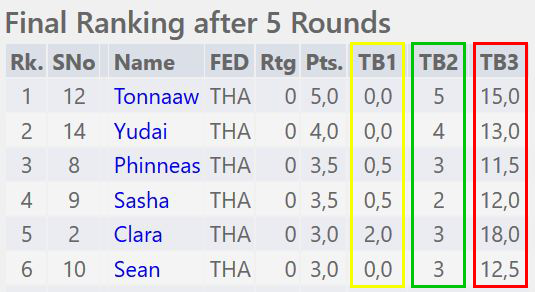Questions about the tie-breaks are one of the most common questions that arbiters and tournament organizers are asked to explain. Novice players are often confused about so many numbers in the tournament table that make little or no sense at all. They need some clarification. Not so rarely we come across difficult situations – a young player gets emotional about a trophy or a medal that he believes he rightfully won. Still, the award went in the hands of his opponent who had the same number of points. And all because of some strange numbers.
Tie-breaks and their weird names
Then there are those weird words. What is Buchholz anyways? Why is it sometimes spelled Buchholtz? How do I pronounce that word? What is Sonneborn-Berger? Neustadtl and Koya? What is going on?
There are so many different system that can be used for deciding the tie-breaks in chess and I can tell you for sure, all of them have two things in common:
1. They are all more or less flawed, and
2. They are all not easy to explain, or it is not easy to explain why are they chosen over others.
The Direct Encounter
The simplest one of all is called “Direct encounter”. It means that if two players are tied with same number of points, the one who had won the mutual game, will be ahead on the table. OK, it seems perfectly fair (it is not always, but later on that) but what if there are more than 2 players tied with each other? Who is ahead then? Well, that is easy – you take the points of their mutual games and whoever has most points is ahead. OK, but what if some of the tied players never played with each other? Well, then you forget about that tie-break and move to the next one.
And that is why the “Direct encounter” tie-break is used in scholastic chess tournaments as a first tie-break – simplicity. It is not difficult to explain and it makes some sense. It makes lives easier both to the arbiters and the parents who need to explain it to their children. The problem is, it only works when small number of players are tied. For more players is practically unusable.

Let’s take a look at the table above, and the two players who are tied with 3.5 points. There are three tie-breaks at use: Direct Encounter (TB1), Greater Number of Wins (TB2), and Buchholz (TB3). They are used in the order as you see them, from left to right. In the yellow column we see that both players have 0,5. That means that they played with each other and their game ended with a draw. No one had won, so we move to the next tie-break.
According to TB2, The player on the 3rd place had won 3 games, while the player on the 4th place had won 2 games. The tie-break gives advantage to the player who won more games. Is it fair? Perhaps, even though there is an argument that the player with more wins also lost more games, which might mean that his rival player is better over all.
The Buchholz
And so we arrive at the most used tie-break in the World of Chess – the Buchholz. It is invented in 1932 by Bruno Buchholz and it is in use ever since, gradually putting aside another complicated system – the Sonnerborn-Berger. It is basically a sum of the opponents points. The more points your opponent make, the higher score you’ll get. The logic behind it is that the player who’s Buchholz score is higher, played more stronger opponents compared to the one with lower score, and he deserves to be ahead in the final standings.
Once in a school tournament here in Bangkok I witnessed this situation: In a six rounds Swiss System tournament, one round before the end, Player A had a perfect 5/5 score. Player B had 4/5 score, having lost the first round. They faced each other in the last round. Player B wins the game, but Player A wins the tournament, because the tie-break system in use is Buchholz. Not being able to understand the cruel logic behind the decision, Player B bursts into tears. He had won his rival, but his rival still wins the trophy. The parents of Player B are upset and all the explanations in the World cannot convince them that the regulations are just.
Most experience players would agree that the Buchholz tie-breaking system is more fair because it awards players who played against stronger opponents and overall, had more difficult tournament to play. They are use to the idea that the mutual game is less relevant than the overall performance.
I remember once in a tournament, after explaining how Buchholz works to a parent, he told me: “Yes, I understand perfectly… but how to explain this to my son?”
I suppose there is no easy way. Buchholz is difficult for novice players to accept, and the simplicity of the Direct Encounter rule can help avoiding some unpleasant situations and perhaps in the end, it is easier to accept it.
That is why I give advantage to Direct Encounter, and I think organizers who run school tournaments should do that too.
I hope this post will be of some use to novice players and parents.
Have a nice day.
